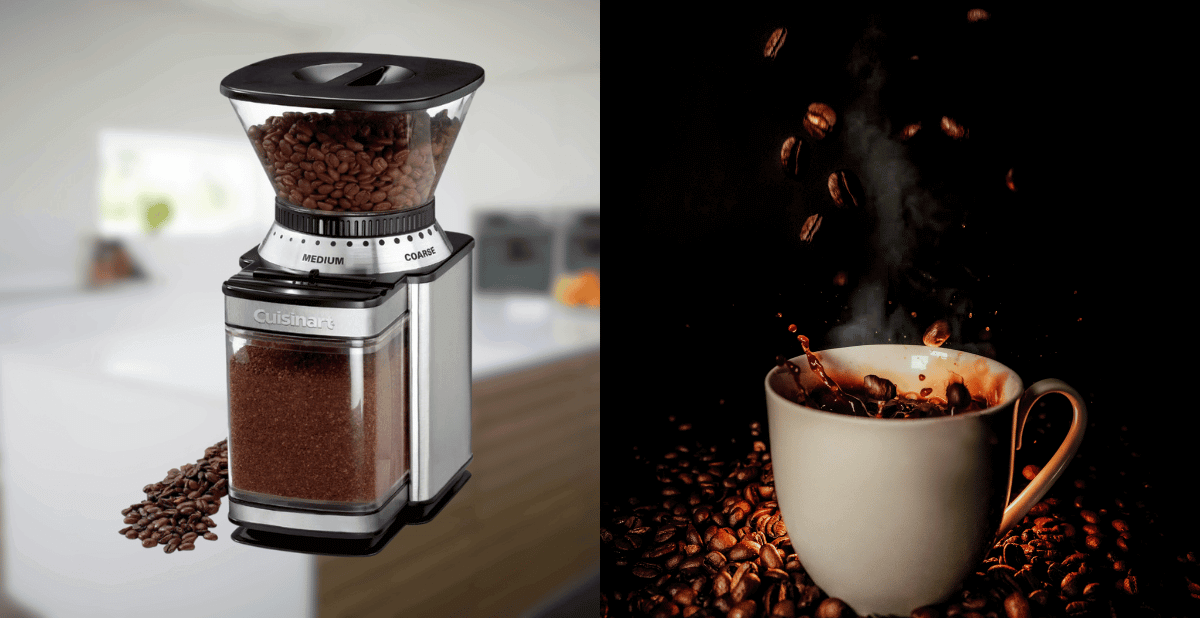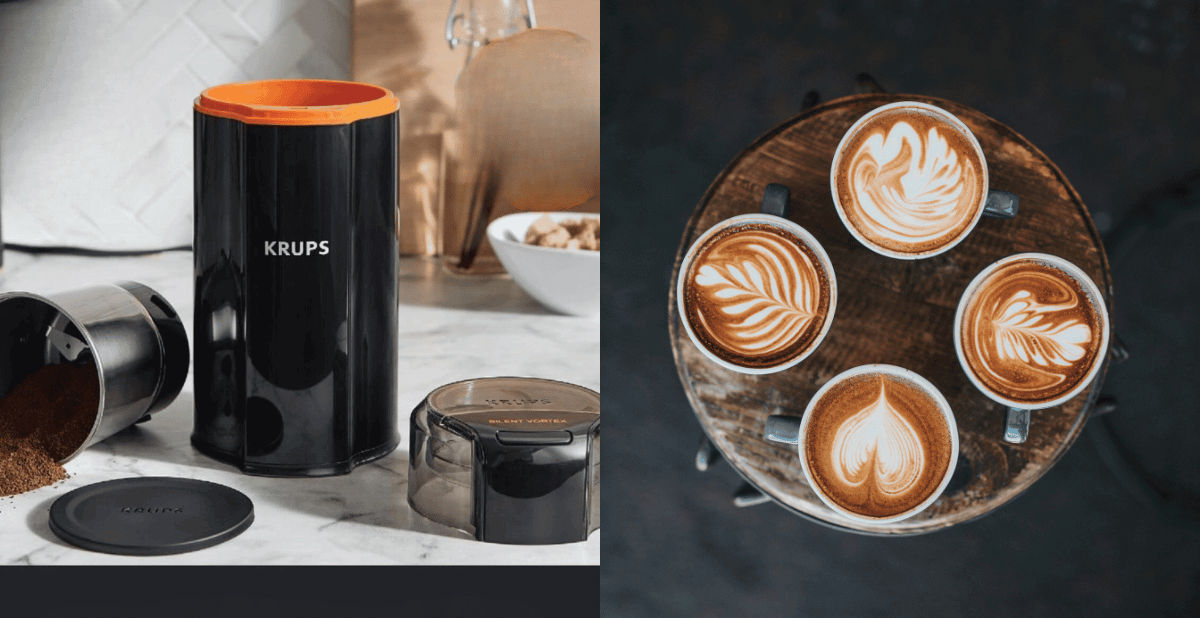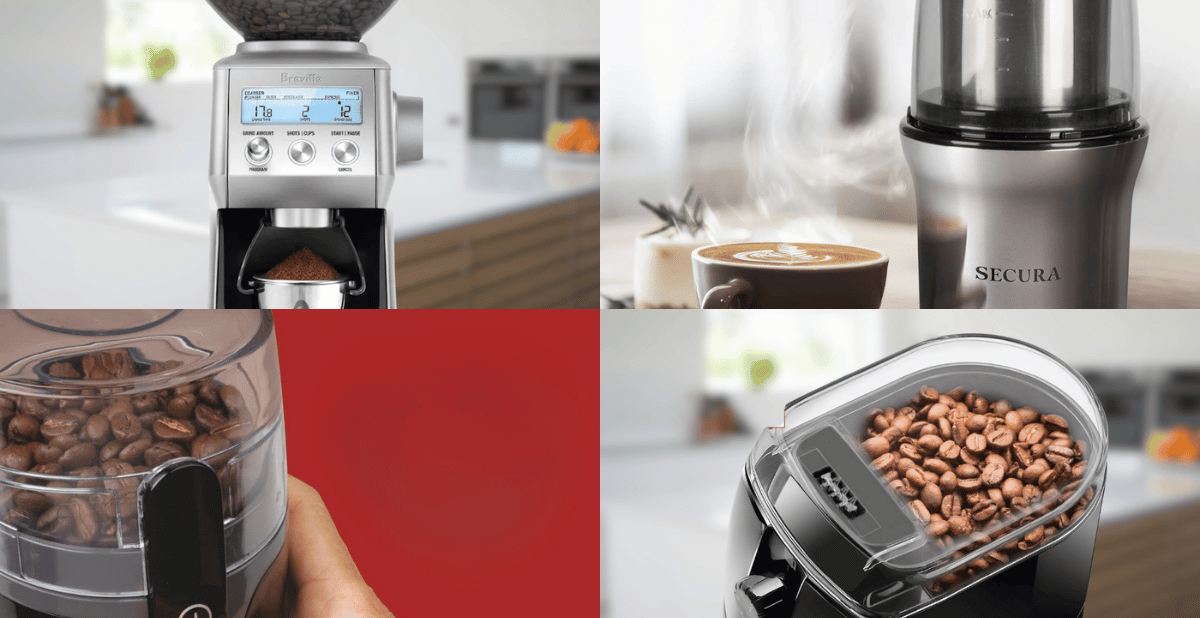When preparing the perfect cup of coffee, your equipment can make all the difference. What is the difference between a grinder and a blade grinder?
Among the most debated tools in the coffee community are the types of coffee grinders: burr grinders and blade grinders.
Understanding the distinctions between these can significantly impact your coffee brewing experience. Coffee is an important staple in our kitchen! 💖
Key Takeaways:
- Burr grinders provide a more consistent grind size, which is crucial for flavor extraction in coffee brewing.
- Blade grinders are typically more affordable but offer less precision, leading to uneven coffee grounds.
- Choosing the right type of grinder depends on your coffee brewing preferences and budget.
The Basics of Coffee Grinding
Grinding coffee beans is a critical step in the coffee-making process.
The type of grind affects the surface area exposed to water, influencing the extraction rate and, ultimately, the taste of the coffee.
Burr and blade grinders handle this task differently, leading to varied results.
Burr grinders consist of two revolving abrasive surfaces (the burrs) between which the coffee beans are ground.
This method allows for a more consistent grind size, which is paramount for techniques like espresso or French press requiring precise extraction rates.
Understanding Blade Grinders
Blade grinders, often less expensive than burr grinders, use a single blade that spins rapidly to chop the coffee beans.
The blade slices through the beans, creating coffee grounds that are often uneven in size.
A blade grinder might suffice for casual coffee drinkers, but it can result in a less balanced brew.
The heat generated by the friction of the spinning blade can also affect the coffee's flavor, sometimes giving it a slightly burnt taste.
This is crucial for those who value high-quality coffee beans' subtle notes and flavors.
The Role of Burr Grinders
Burr grinders are revered among coffee aficionados for their ability to produce uniformly ground coffee.
Whether you choose flat burrs or conical burrs, the principle remains the same: precise, controlled grinding that leads to more balanced coffee.
Conical burr grinders feature a cone-shaped burr that grinds the beans into a central area, while flat burr grinders use two parallel rings to crush and grind the beans.
Both types offer settings that allow for adjusting the grind size to suit various brewing methods.
Price Comparison
Investing in a burr grinder is generally more expensive than purchasing a blade grinder.
However, for coffee enthusiasts who brew regularly and seek quality, the investment in a burr grinder can be worthwhile.
The longevity and performance of burr grinders often offset their higher initial cost over time.
Blade grinders are a budget-friendly option that works well for basic coffee brewing needs.
They are an excellent choice for those new to coffee grinding or who brew less frequently.
Maintenance and Durability
Maintaining your coffee grinder can significantly extend its lifespan and ensure consistently good coffee.
Burr grinders are typically easier to clean because they can be disassembled, allowing better access to remove residual coffee particles.
Durability is another factor where burr grinders excel.
They are built to withstand frequent use, making them a favorite in both home and commercial settings.
Blade grinders, while durable, do not usually last as long under heavy use.
Exploring the Varieties of Burr Coffee Grinders
When diving into the world of burr coffee grinders, you'll encounter two main types: the conical burr grinder and the flat burr grinder.
Each type brings its unique flair to the grinding process.
The conical burr grinder, known for its energy efficiency and quieter operation, uses a cone-shaped burr to grind coffee beans.
This design allows for a less heat-generating process, preserving the delicate flavors of the coffee.
On the other hand, the flat burr grinder offers remarkable consistency in grind size, making it a favorite among espresso aficionados who crave a finer grind and a more robust extraction.
The choice between a conical and a flat burr grinder often boils down to personal preference and brewing goals.
Conical burr grinders are typically easier to clean and maintain, making them a great choice for home baristas who value convenience alongside quality.
Flat burr grinders, while requiring more meticulous cleaning, provide unparalleled uniformity in ground coffee, which is crucial for achieving the optimal espresso shot. Both types of burr grinders avoid the pitfalls of blade grinders, which tend to produce uneven and poorly ground beans, thus compromising the quality of the brew.
The Impact of Grind Size on Coffee Brewing
Understanding the importance of grind size in brewing coffee is crucial for any coffee lover.
The grind size directly affects the extraction process during brewing; finer grinds increase the surface area exposed to water, leading to a richer extraction and a higher risk of over-extraction.
Conversely, coarser grinds slow the water flow, which can be ideal for methods like a French press or cold brew, where over-extraction is less of a concern.
The ability to adjust grind size with precision is what sets burr grinders apart from blade grinders, which often offer less control and consistency.
Choosing the right grinder is key for those looking to perfect their brew.
A burr grinder provides the control needed to fine-tune the grinding process to suit various brewing methods—from espresso to drip coffee to French press.
The consistency in grind size achieved with a burr grinder ensures that each cup of coffee is as close to perfection as possible.
Whether you opt for a burr or blade grinder, understanding the impact of grind size on your coffee's flavor profile is a step toward brewing better coffee at home.
Impact on Coffee Quality
The quality of your coffee grind directly influences the quality of your brew.
Burr grinders offer a more consistent grind size, which is crucial for extracting the full flavor and aroma of your coffee beans.
This consistency is especially important when brewing methods like espresso or French press are used.
Blade grinders, while convenient, often produce a mix of coarse and finely ground beans, leading to uneven extraction and a less desirable cup of coffee.
For those serious about their coffee, the difference in quality is noticeable.
Which Grinder is Right for You?
Choosing between a burr grinder and a blade grinder often comes down to your personal coffee brewing preferences and how much you are willing to invest.
If precision and consistency are top priorities, a burr grinder is the best choice.
A blade grinder may suffice for casual coffee drinkers who are not focused on achieving the perfect brew.
Until Next Time...
The main difference between a burr grinder and a blade grinder lies in their grinding mechanisms and the consistency of the ground coffee they produce.
Burr grinders offer a more uniform grind that enhances the flavor and quality of the coffee, while blade grinders provide a more accessible but less consistent option.
If you have questions about herb grinders, click here.
Choosing the right grinder will depend on your coffee preferences, brewing methods, and budget.
Happy Brewing,
MommaPuff








